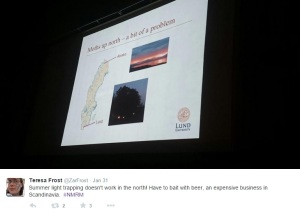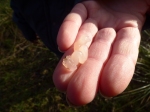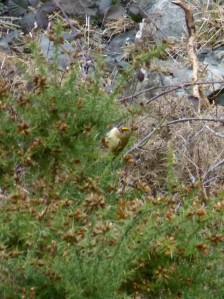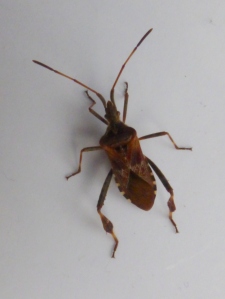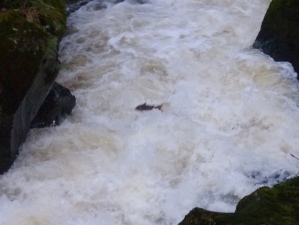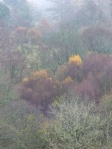Catching Up pt 2
Spring truly began for me on the w/c 23rd February. Twice during the week, I saw a bumblebee, though both times it was just a quick flyby. However, on 1st March (when attending the GMS conference), I photographed my first bumblebee of the year! There was much excitement as Matt and I racked our brains, I definitely recognised the species but couldn’t quite remember the name – it had, after all, been quite a few months since I had last attempted to identify a bumblebee! With a vague inkling in mind, I searched through one of the books on sale at the conference and triumphantly pronounced that it was a Tree Bumblebee (Bombus hypnorum). This isn’t actually an original native species to the UK, and was first seen here only in 2001 but has rapidly spread since. The Bumblebee Conservation Trust provides a link to an article written by Clive Hill with more information.
As well as the excitement from photographing my first bumblebee of the year, I was enthralled by her behaviour. I believe she must have literally just emerged from hibernation, as she was sitting very still in the sunlight for a good 10-15 minutes – bumblebees need to warm themselves up after emerging.
- Tree Bumblebee, Bombus hypnorum (phone photo)
My next destination was up in Cambridgeshire where I headed to Fen Drayton Lakes. Before I even got there, I was thrilled – as Matt pointed out my first Brimstone butterfly on a roadside verge (whilst I was driving unfortunately so no photo) – a good sign of spring for sure! At the reserve itself, there was another Brimstone that fluttered away annoyingly quickly, Great Crested Grebes performing their courtship dance (too far away for a decent photo) and lovely small birds all over the place – including my first Bullfinches for a number of months and some Long-tailed Tits (always lovely birds to see). Record shots for both I’m afraid.
- Unknown caterpillar
- Great Crested Grebes (at a distance), Podiceps cristatus
- Male Bullfinch (Pyrrhula pyrrhula)
- Mute Swan, Cygnus olor
- A willow sp
- Just on the side of the lake?
- Female Bullfinch (Pyrrhula pyrrhula)
Now, a focus on Lepidoptera (as usual) – a wonderful group as I’m sure you’ll agree. In London, I received a call to rescue an animal in distress … admittedly it was from just outside my parents’ house, and by my mum. Nonetheless, my inner superhero burst out and I rushed to the rescue! It was a butterfly, a Red Admiral (Vanessa atalanta) to be precise, resting in the road very close to one of the wheels of my mum’s car. I dashed forward and scooped it up, it needed safety! With a quick glance around to check the scene, I decided that our garden was probably the best spot for it and proceeded to gently release it into its new home. Phew, a good job well done!
But wait! Not all was well! The butterfly seemed to be struggling … what was wrong with it?! A closer inspection was needed and I peered closely, it seemed – oddly – that the very end part of its hind wings were stuck together! I knew I hadn’t touched those parts of the butterfly, so I am still wondering how it happened. Anyway, gently and with great care, I managed to separate the hind wings, hopefully with minimal damage. The butterfly definitely seemed happier (although, do butterflies feel happiness / emotions in general?), albeit that it was in bad condition from its hibernation.
Moth-trapping has of course been continuing in the garden. I’ve not caught a huge variety of species yet, or even large numbers of moths, but it is still better than when we were in the grip of winter! For the most part, they’re LBJs (little brown jobs) but actually, if you look closely you can see that even these LBJs have some intricate patterning! The last photo is of a leaf mine in a bramble plant over in the local park. You can see that one end of the mine is very thin, this is where the caterpillar hatched out of its egg and started munching. The mine gradually gets bigger and bigger, matching the caterpillar’s growth as it wanders around the inside of the leaf. This mine is caused by one of the micro-moths, likely to be Stigmella aurella I think.
- Common Plume (Emmelina monodactyla)
- Common Quaker (Orthosia cerasi)
- Double-striped Pug (Gymnoscelis rufifasciata)
- Early Grey (Xylocampa areola)
- Small Quaker (Orthosia cruda)
- Leaf-mine





































































